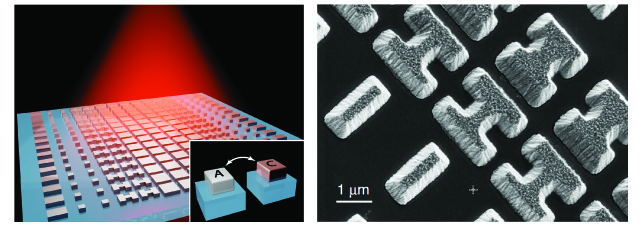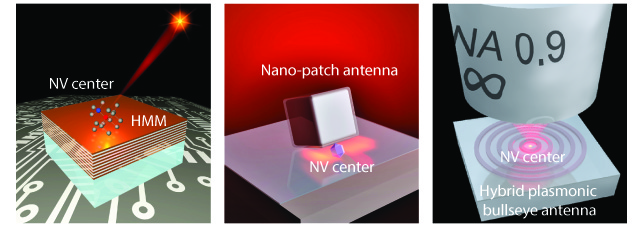Research
Phase-change metasurfaces in mid-infrared

Sub-wavelength antennae are a key building block for a plethora of imaging, sensing, and photo-detection devices. From the material perspective the mid-IR range (3-10μm) is fairly unexplored and very limited by the number of materials with favorable properties. The platform of chalcogenide glasses, including recently emerged GeSbSeTe (GSST), open up new functionalities for sub-wavelength antenna engineering. GSST possesses unique optical properties, including a high refractive index (3.2 – 5), low losses, and a phase-change ability in mid-IR (3 – 10μm). At a certain temperature its crystal structure can switch between crystalline and amorphous states, which results in a significant change in the refractive index (Δn>1). Based on this material platform, our group at MIT has demonstrated all-dielectric metasurfaces with reconfigurable optical properties. Our research activity has opened up opportunities for constructing ultrathin meta-optical devices which are more efficient, cost-effective, and capable comparing to their traditional bulky counterparts.
Quantum Nanophotonics with color centers in diamond

Color centers in diamond are crystalline defects that share many quantum properties with single atoms. At the same time they are easier to manipulate than the latter and can be integrated into a solid state infrastructure. They are promising for realizing quantum devices such as nanoscale sensors, single-photon sources or quantum memories. Our research at Purdue University aims at finding the promising ways to enhance or better harness the quantum properties of such systems. The use of CMOS-compatible, epitaxially grown plasmonic materials in the design of plasmonic structures promises a new level of functionality for a variety of integrated room-temperature quantum devices based on diamond color centers.
Simple explanation of the metamaterials-based method for enhancing single-photon emission